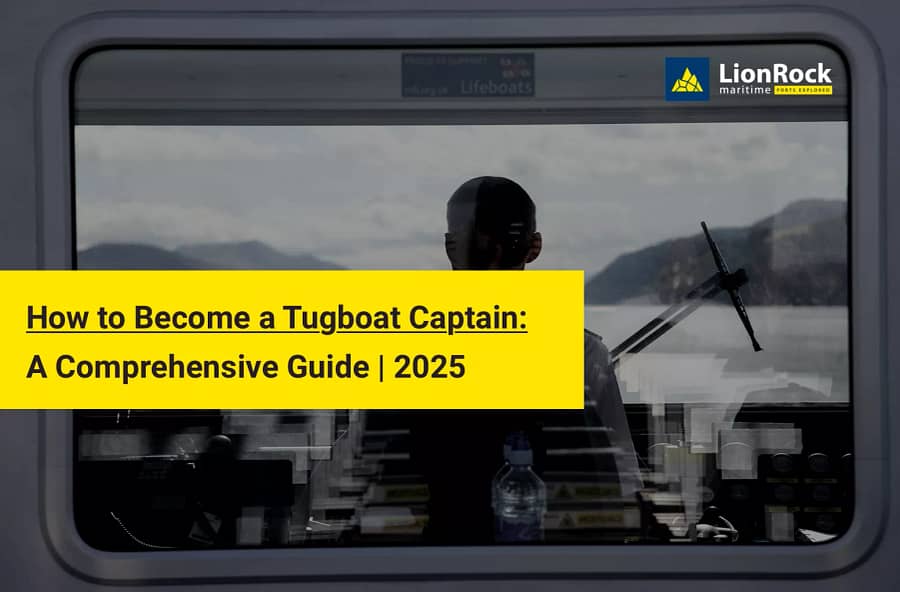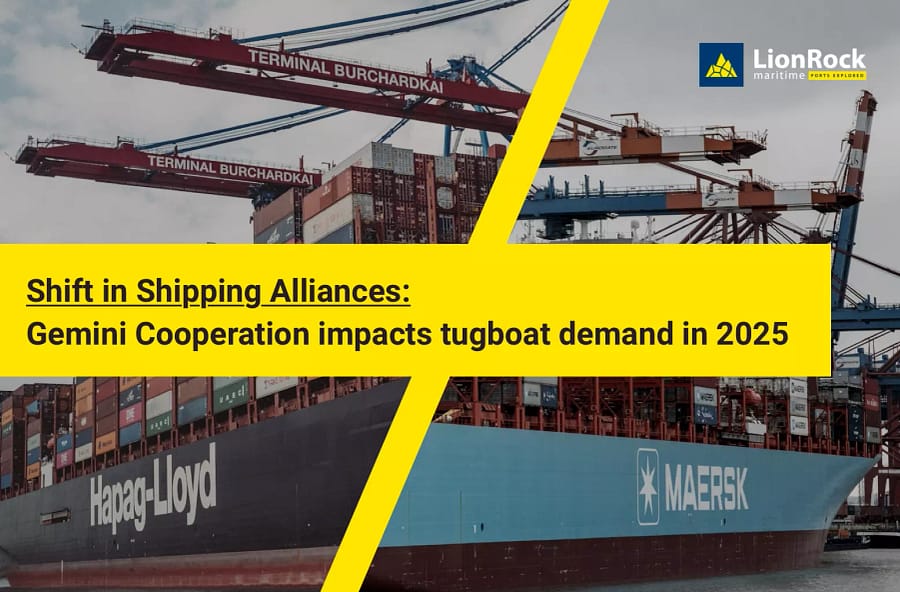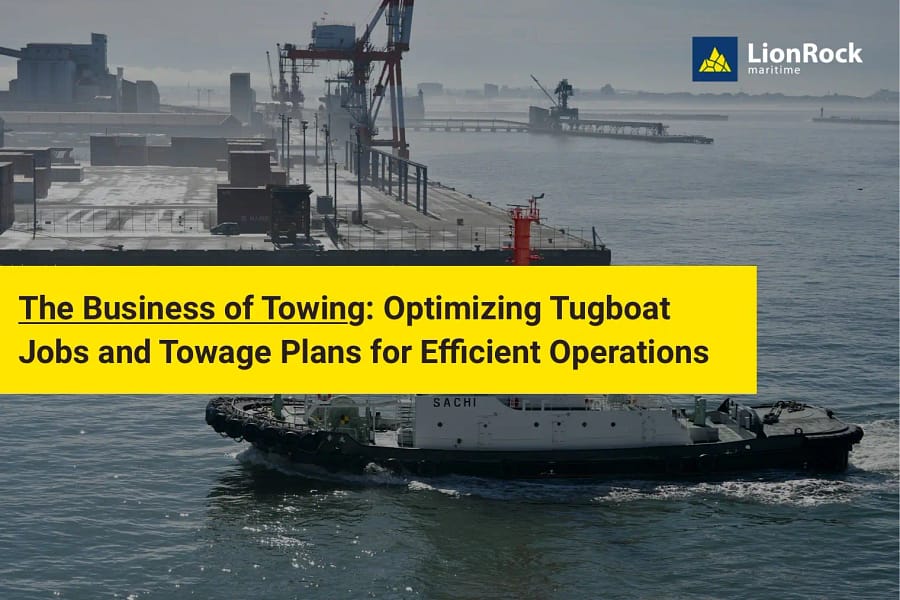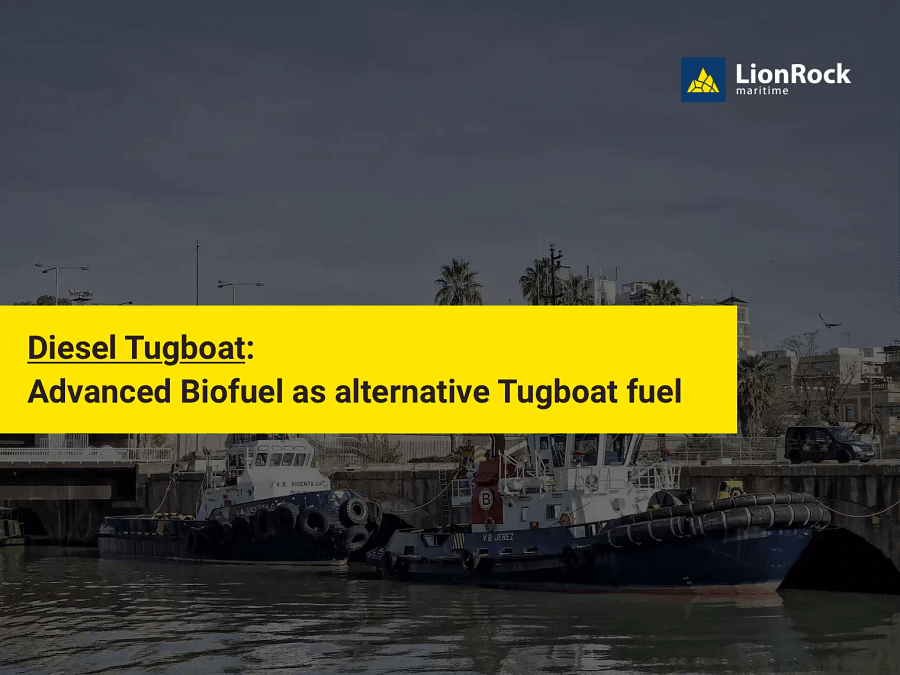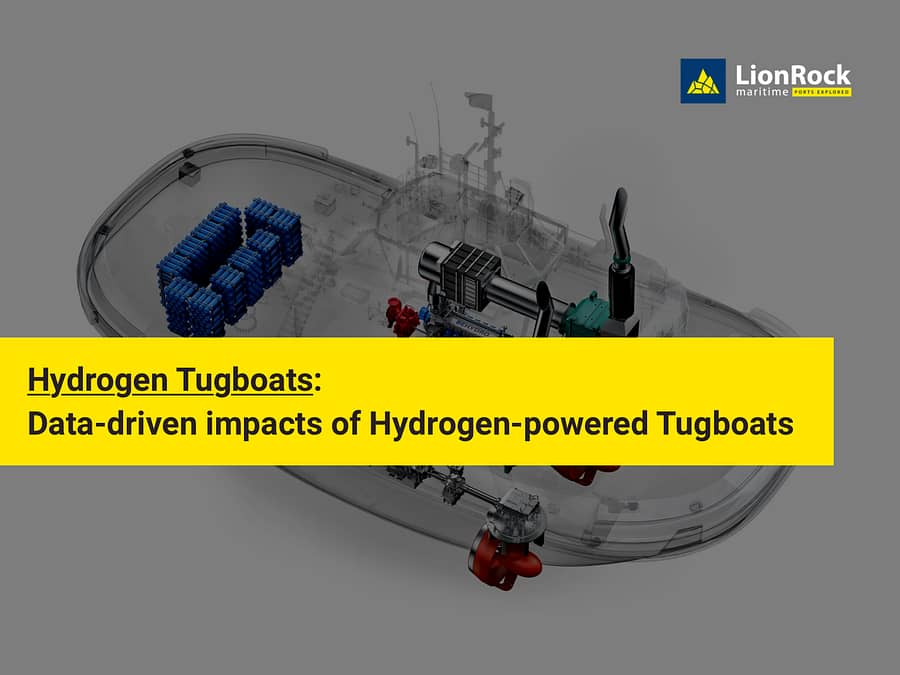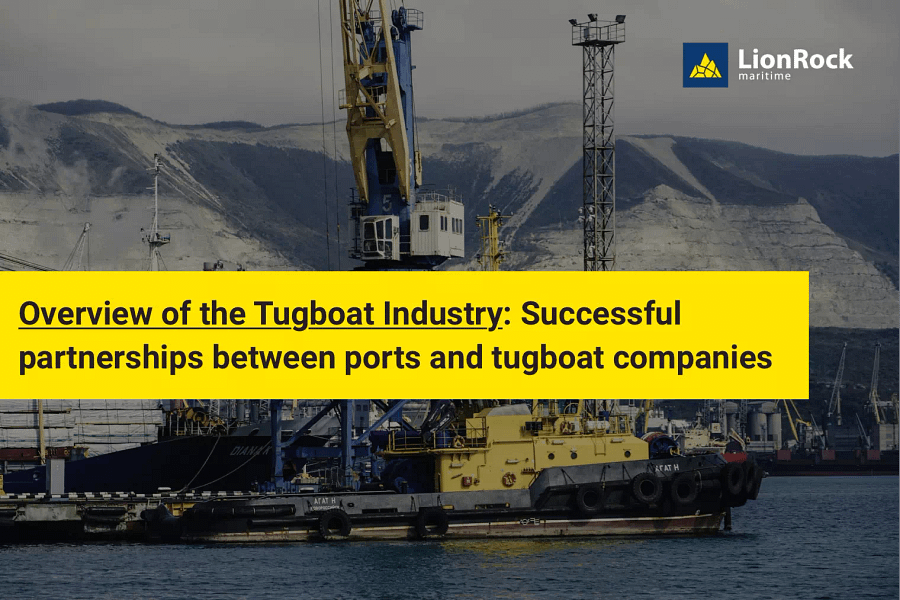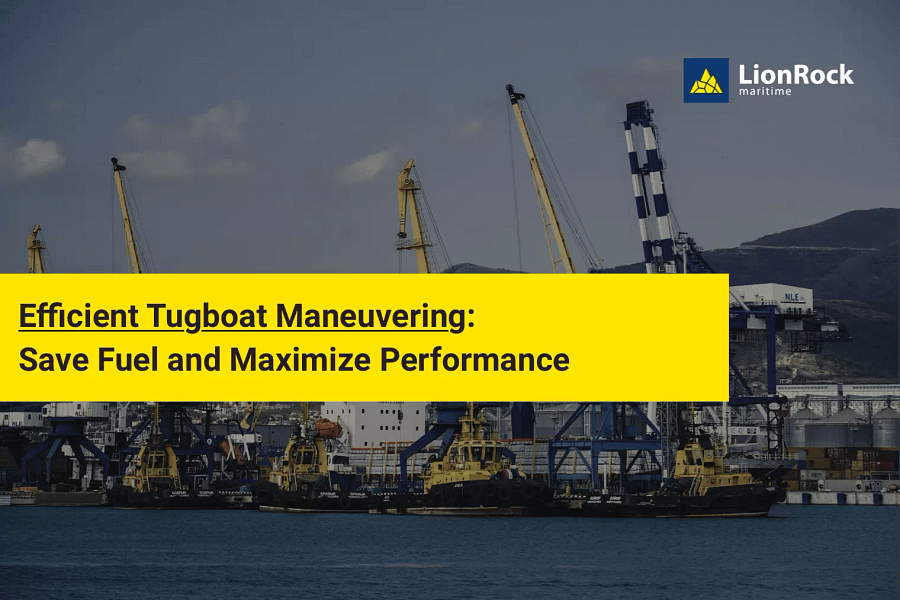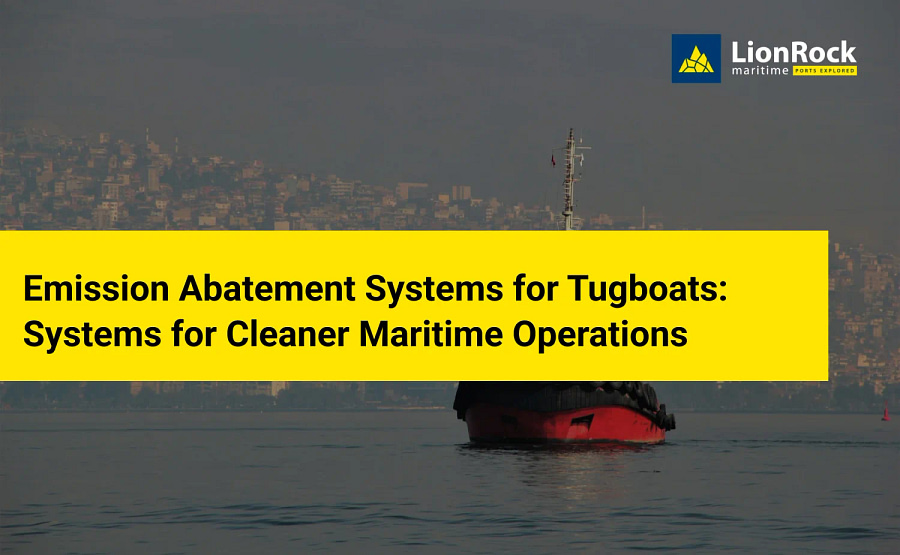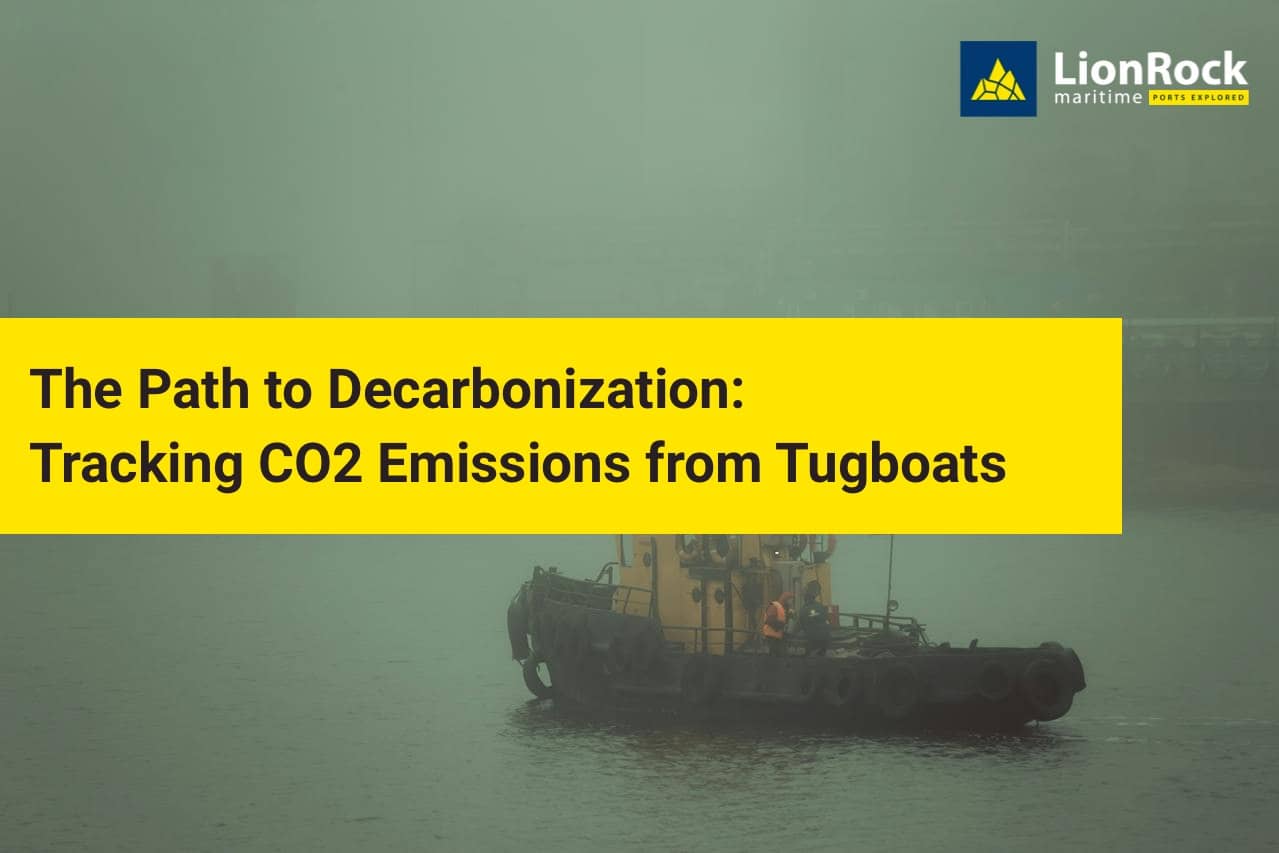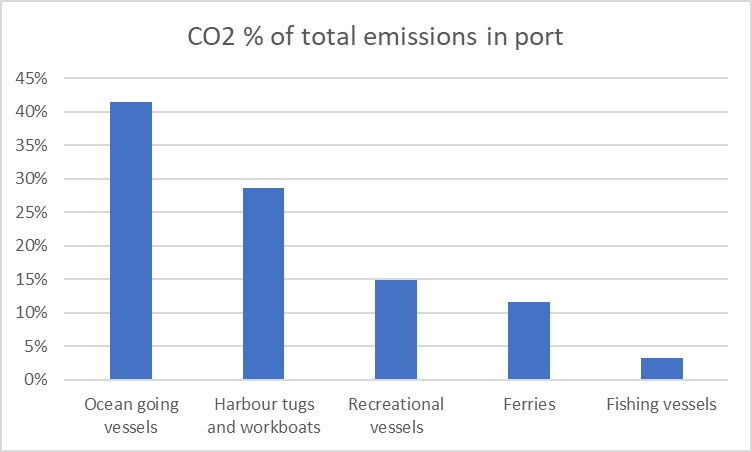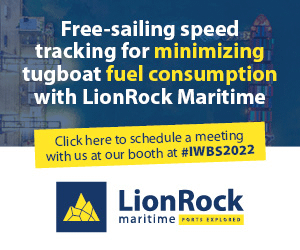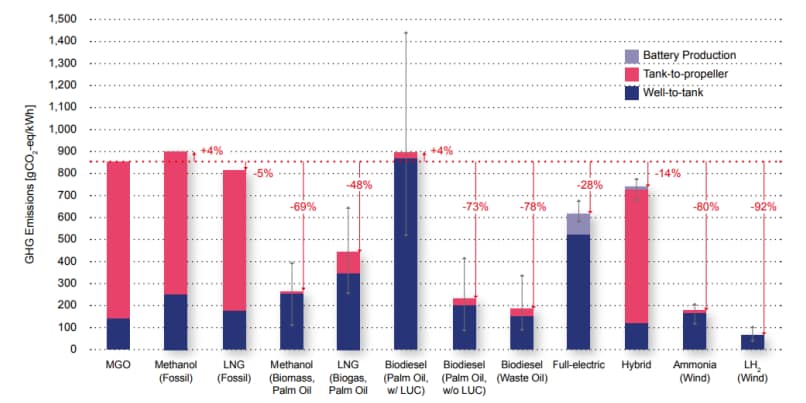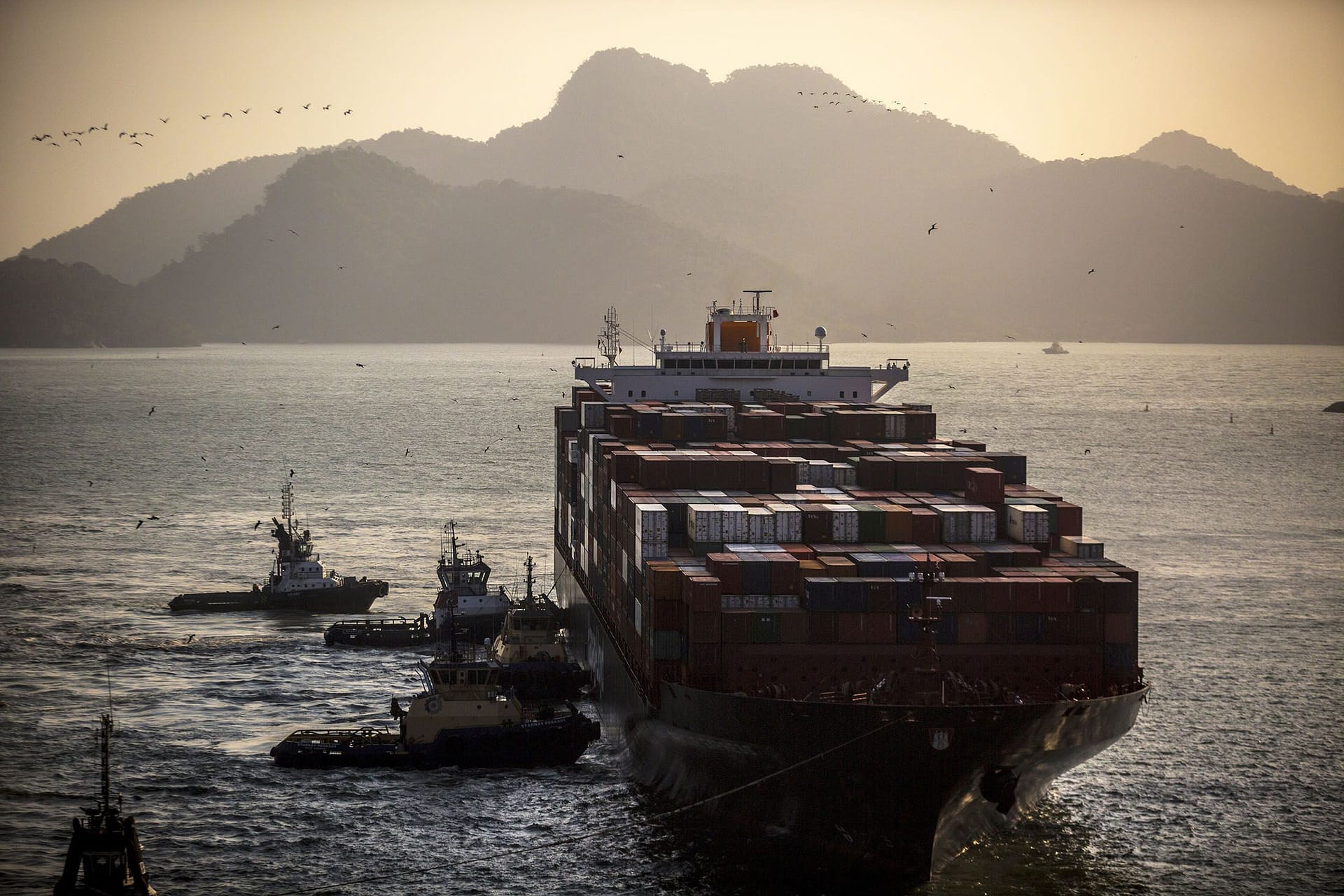IMO Decarbonization on Maritime Emissions: Tugboat Compliance & Solutions
Author: Rick Broersma
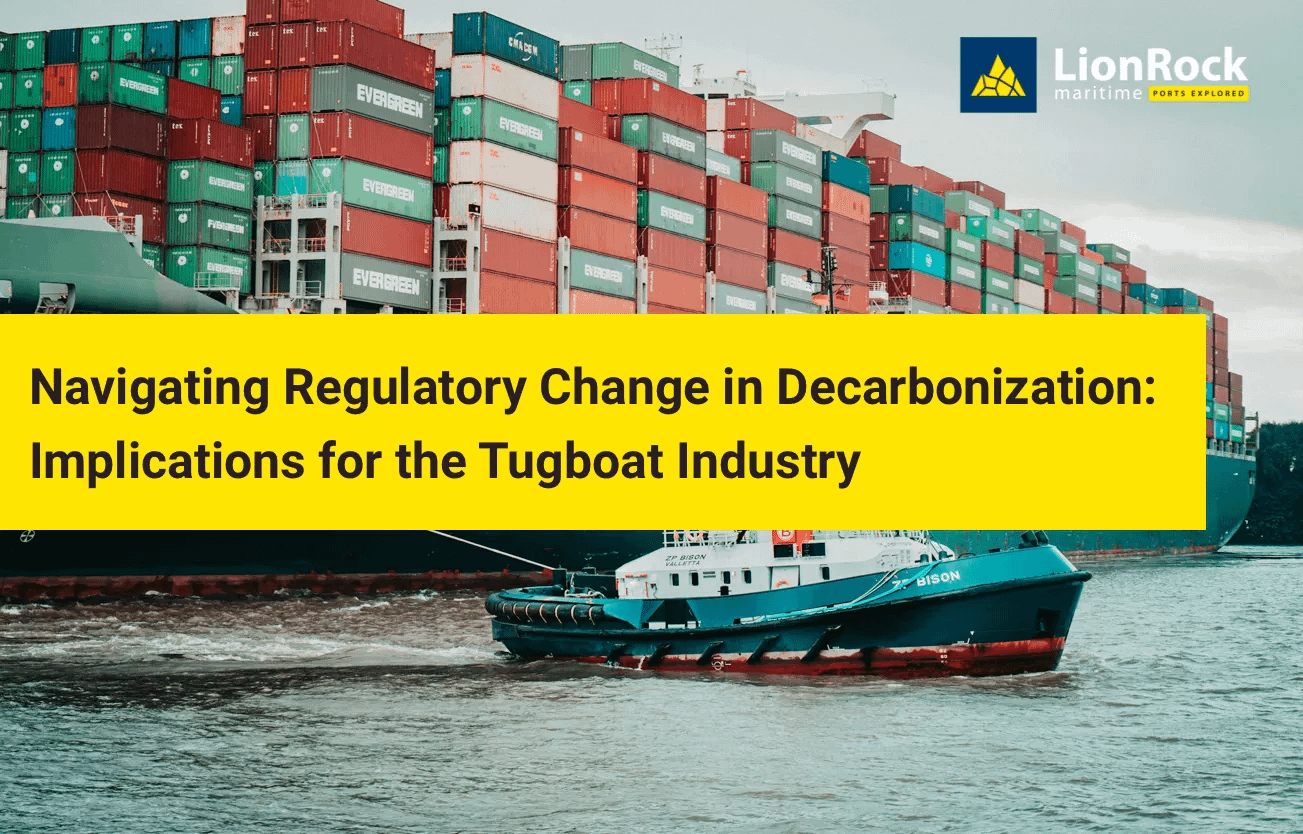
Navigating Regulatory Change In Decarbonization: Implications For The Tugboat Industry
Understanding Evolving Maritime Regulations and Overcoming Challenges during the IMO Decarbonization Phase
In response to escalating concerns about climate change, the shipping industry is undergoing a transformative phase led by global mandates such as the International Maritime Organization’s (IMO) ambitious targets for net-zero greenhouse gas emissions (GHG) by 2050. Additionally, regional regulations, such as the European Union’s ETS system, are set to impact emissions reduction strategies in and across the maritime sector. Their impacts on the tugboat industry, although limited today, are likely to be increased in the near-future.

IMO Decarbonization: What are the main global and regional regulations around emission and emissions reduction?
Global Regulations
The IMO, a United Nations agency responsible for regulating shipping, sets global standards for the safety, security, and environmental performance of international shipping. The IMO has set targets aimed at achieving net-zero greenhouse gas emissions (GHG) by 2050, establishing a timeline with essential milestones. Using 2008 levels as the baseline, the organization aims to achieve a 40% reduction in greenhouse gas emissions by 2030.
To meet these ambitious goals, the IMO’s 2023 strategy outlines a timeline for implementation. However, a 2023 IMO study indicates that the current policy measures might not sufficiently reach the 2030 goal. The study suggests the need for increased policy ambition, stating that policies effective by 2025 are necessary to achieve the targets. Consequently, to maintain the set timeline, the implementation of further policies may be needed, suggesting that further policies and restrictions are in development.
Starting from January 1, 2023, all ships are mandated to calculate their attained energy efficiency Existing Ship Index (EEXI) to measure their energy efficiency. Simultaneously, they are required to begin data collection for reporting their annual operational carbon intensity indicator (CII), assessing a ship’s annual reduction factor necessary for improving operational carbon intensity. Ships will receive ratings (A, B, C, D, or E) based on their CII performance levels. Ships consistently underperforming (rated D for three years or E for one year) will need to submit corrective performance plans. Later, as mid-term measures are adopted in 2025, a fuel standard and GHG pricing mechanism will be introduced. The combination of these measures is essential to create demand certainty for new fuels and incentivize the green transition.
Regional Regulations
In addition to the global IMO system, the European Union’s Emission Trading System (EU-ETS) will expand to include the maritime sector. The cap-and-trade system is the cornerstone of the EU’s strategy, ensuring the EU’s climate objectives become binding (GHG domestic reduction target of at least 55% compared to 1990 levels by 2030). Following the recent enactment of the Monitoring, Reporting, and Verification Regulation for maritime transport, maritime activities are now included in this trading system, mandating emissions from specific ship types to be computed.
The implementation of the regulation will follow a phased timeline, initially focusing on monitoring procedures. Subsequently, a carbon trading system will be introduced. The rollout schedule will vary based on emission type and ship characteristics. Initially monitoring CO2 emissions, as they constitute the majority of greenhouse gas emissions from maritime transport. CO2 emissions will be included in the EU-ETS in 2024, followed by the monitoring of methane (CH4) and nitrous oxide (N2O) emissions. From 2026 onwards, methane and nitrous oxide will be included in the EU-ETS. Initially, the regulation applies to cargo or passenger ships of 5,000 GT and above, later extending coverage to offshore vessels of more than 5000 GT and smaller ships between 400-5000 GT from January 1, 2025. The initial monitoring will be extended to the EU-ETS in 2024 (for cargo/passenger ships of 5,000+ GT), and in 2027 (offshore and general cargo ships 400-5000 GT).
Companies are obligated to report aggregated emissions data at the company level to the relevant authority and the EU Commission by March 31 each year. Compliance responsibility rests with the shipping company, requiring them to surrender European Union allowances (EUAs) and bear the associated costs. The shipping company is responsible for defining the monitoring plan for fuel consumption calculation for each vessel under its purview. Similar to the IMO regulations, entities involved in shipping operations are responsible for compliance. Ship owners, operators, and manufacturers must invest in emission reduction technologies, transition to alternative fuels, and adhere to the IMO’s emission reduction targets. Consequently, ship owners face a complex set of challenges and opportunities due to the proposed amendments aiming for zero-emission shipping. Adapting to these changes will necessitate significant investments, adherence to new regulations, operational adjustments, and proactive engagement in long-term planning and collaborations.
How will these regulations specifically affect the tugboat sector?
Having explored the regulations impacting the maritime industry, it’s essential to examine their direct implications for the tugboat sector. These rules carry diverse effects across various facets of shipping, making it crucial to understand their specific influence on tugboats. Let’s delve into how these regulations manifest as challenges and transformations within the tugboat industry.
Starting January 2025, tugboats exceeding 400 gross tonnage (GT) that operate offshore and fall within the specified criteria will be subject to the EU-MRV. This scheme necessitates the measurement, reporting, and verification of emissions for vessels operating within the European Union. Like other vessels, the monitoring focuses on carbon dioxide (CO2) emissions and later extends to methane (CH4) and nitrous oxide (N2O) emissions. From 2027, the tugboats exceeding 400 GT will be subject to the ETS scheme. Not only does this mean monitoring, reporting, and verifying their vessels’ emissions, they also need to purchase and surrender emission allowances (EUAs) equivalent to their vessel’s emissions. This incurs costs as they may need to buy additional allowances if their emissions exceed their allocated cap.
Similar to the EU regulations, IMO regulations require tugboat operators to track their Energy Efficiency Existing Ship Index (EEXI) ratings for tugs exceeding 400 GT. However, instead of being subject to carbon pricing, the IMO focuses on improving the environmental friendliness of ships. If ships score lower than average on their annual operational carbon intensity indicator (CII), they are obliged to improve in the next three years (if scoring D – minor inferior) or in the next year (if scoring E – inferior performance level).
So, is the magic number 400 GT? It appears that these regulations were not designed with tugboats in mind. Smaller tugboats, falling below the 400 gross tonnage (GT) mark, constitute a more substantial portion of the tugboat fleet compared to larger vessels. Further, the adaptation of these regulations to tugboats might present challenges due to their operational uniqueness, which might not fit the standard emissions monitoring criteria designed for larger vessels. However, the European Commission has expressed its intention to expand the scope of application over time and is planning to present a report to the European Parliament and to the European Council by 31 December 2026. By examining the feasibility of expanding the EU-ETS to smaller ships. Thus, despite the EU-ETS regulation not aiming at tugboats yet, it seems this will be likely as it increases its scope.
What challenges do tugboat operators face to implement or abide by these regulations?
The tugboat sector faces several significant challenges in implementing and adhering to the evolving maritime regulations. Tugboats, known for their distinct operational nature characterized by short bursts of high-intensity activities, encounter difficulties in complying with standardized emission metrics tailored for larger vessels. Traditional emission-tracking metrics, like the GT (Gross Tonnage) to fuel consumption ratio, do not accurately reflect the varying power and fuel consumption levels among tugboats.
Compliance becomes a complex puzzle for tugboat operators due to regulations like the Energy Efficiency Existing Ship Index (EEXI), the EU-Monitoring, Reporting, and Verification (EU-MRV) scheme, and potential expansions of the EU Emissions Trading System (EU-ETS). These regulations, initially designed for larger vessels, lack the specificity needed to precisely monitor and report tugboat emissions. Implementing emission-tracking systems poses financial and technological hurdles, with high upfront costs and the challenge of integrating new technologies into older tugboat models.
The tugboat sector’s unique operational profiles require tailored emission reduction practices distinct from long-distance vessels. Adapting to upcoming frameworks, such as the IMO’s fuel standard and market-based measures, requires significant fleet and infrastructure adjustments. Additionally, the tugboat industry must prepare for potential expansions of regulations, as the European Commission explores widening the scope of the EU-ETS to smaller ships.
How maritime data and LionRock can help overcome these challenges
In navigating the challenges posed by evolving maritime regulations, data and innovative solutions like LionRock emerge as instrumental tools for the tugboat sector. With a crucial aspect of compliance being the measurement and tracking of fleet emissions, LionRock offers a crucial solution. Its capability to effectively monitor fuel consumption allows for accurate and comprehensive emission data collection, enabling tugboat operators to meet regulatory requirements in a cost-efficient manner.
Tugboat operators are dealing with the need to comply with evolving global and regional regulations aiming for emissions reductions in the maritime sector. Challenges revolve around aligning unique operational profiles with standardized regulations, investing in cost-efficient technologies, and overcoming financial and technological barriers to accurately measure and reduce emissions. LionRock Maritime addresses these challenges by providing tailored data analytics, predictive models, and compliance strategies to aid tugboat companies in their journey towards decarbonization while ensuring operational efficiency and market competitiveness.
As maritime regulations continue evolving, the tugboat industry may inevitably face an extended scope of compliance. While current regulations might not directly impact smaller tugboats, anticipating future regulatory convergence is crucial. Tugboat operators should proactively increase fuel efficiency to prepare for forthcoming mandates. Reducing fuel consumption aids environmental sustainability and positions companies favorably for future compliance. Operating with increased fuel efficiency ensures a competitive edge and readiness for the changing industry.
You can schedule a meeting with our representatives and get a consultation on how you can achieve a better operational efficiency: Schedule a Call now.
Does your Towage Company need Assistance on the IMO Decarbonization efforts?
Tugboat operators facing the complexities of new IMO and EU emissions regulations can find a reliable ally in LionRock. Our expertise in maritime data and analytics offers the perfect solution, such as our Waste Free Shipping solution, for efficient compliance and enhanced operational performance. Don’t let regulatory challenges hinder your progress. Partner with LionRock to future-proof your fleet and thrive in the evolving maritime landscape. Contact us now to set your course for success.
Frequently Asked Questions
What are the major global regulations driving emission reduction in the shipping industry?
How will global regulations on decarbonization affect the tugboat sector?
What challenges do tugboat operators face in implementing current regulations on decarbonization?
How can data and LionRock assist tugboat operators in meeting regulatory requirements on decarbonization?
References
https://climate.ec.europa.eu/eu-action/transport/reducing-emissions-shipping-sector_en
https://www.imo.org/en/MediaCentre/HotTopics/Pages/Cutting-GHG-emissions.aspx
https://emsa.europa.eu/reducing-emissions/faq-mrv-changes.html
https://www.clydeco.com/en/insights/2023/10/eu-emissions-trading-system-for-maritime-transport
Related Posts
How to Become a Tugboat Captain: A Comprehensive Guide | 2025
A Comprehensive Guide to a Rewarding Career in Maritime Operations How to become a Tugboat Captain Becoming a tugboat captain is more …
Shipping Alliances: Gemini Cooperation shifts tugboat demand in 2025
How Shipping Alliance Restructuring and Market Insights Shape Tugboat Demand and Fleet Optimization Introduction – Change Within Shipping Alliances and Its Impact …
The Business of Towing: Job Costing Insights
Cost to serve on tugboat jobs In the competitive world of maritime services, understanding the cost to serve is crucial for towage …
Diesel Tugboats and Advanced Biofuel: An In-Depth Look at the Integration of Biodiesel
Introduction – Biofuel to power diesel tugboats The maritime industry is undergoing a significant transformation as the European Green Deal and the …
Hydrotug: Data-driven impacts of Hydrogen-powered Tugboats
A close look into the recent data of the Hydrotug Innovative solutions are emerging to meet stringent environmental standards as the maritime …
Overview of the Tugboat Industry: Successful partnerships between ports and tugboat companies
Explore how strategic partnerships between ports and tugboat companies enhance efficiency, safety, and operational success in the maritime industry. Successful partnerships between …
Efficient Tugboat Maneuvering: Save Fuel and Maximize Performance
Efficient Tugboat Maneuvering: Save Fuel and Maximize Performance The Art of Tugboat Maneuvering: An Introduction Efficient tugboat maneuvering is essential in the …
Emission Abatement Systems – AES to reduce Tugboat Emissions
Emission Abatement Systems for Tugboats: Systems for Cleaner Maritime Operations and Reduction of Tugboat Emissions Tugboat emissions have become a growing concern …


